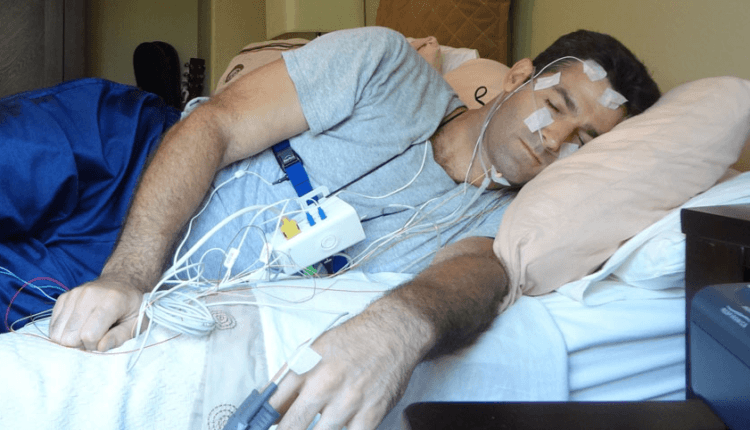First steps in sleep research: where did it all start?
As a subject for a wide flight of scientific research, sleep began to be considered only in the second half of the 20th century. And this is largely due to the fact that for the emergence of scientific interest in this area, it was necessary to wait for many years for the emergence of experimental psychology. And it, by the way, appeared only in the 19th century and began to actively develop already in the 20th century. In addition, the lack of interest on the part of scientists in the study of dreams was also affected by the lack of the necessary tools. Before the invention of all kinds of sensitive electronic devices, it was not possible to track the changes occurring in the human body during dreams.
As for the beginning of scientific research in the field of dreams, here everything began with a primitive experiment conducted by the Italian physicist Luigi Galvani. This physicist discovered animal electricity. The scientist touched the cut-off leg of the frog with two metals, and it began to move, as if alive. By attaching wires to it, Galvani created a primitive device that was capable of measuring electrical potential. Hence the theory that the nerves can serve as a source of electricity got its life. A little later, Alessandro Volto proved the fallacy of Galvani’s theory. The scientist showed that the electric potential also occurred in a primitive battery obtained by combining copper and steel wire.
When the scientific understanding of electricity reached its peak, it became possible to measure the activity of neurons in all parts of the nervous system. It wasn’t until 1875 that the scientist Caton tried for the first time to measure the brain’s response to sensory stimulation. The experiment was carried out on a dog whose skull was opened under anesthesia. After the electrons were connected, the animal went into shock, and continuous changes and rapid voltage fluctuations began to occur in the dog’s brain. This further served as a clear confirmation that the brain is not only an apparatus for responding to stimuli. And his neutral state, contrary to all conjectures, turned out to be not complete rest, but activity.
Learn more about sleep research in this video.
Sleep research: how many stages are there?
Later, with the development of progress, it was revealed that sleep has several stages. In the first and second stages of sleep, immersion in this state occurs quickly. During this period, the brain remains active and starts the editing process, as a result of which it decides for itself which memories are needed and which are not worth keeping in memory. The first stage of sleep, according to scientists, lasts about 5 minutes. At this point, the sensitivity weakens and the person begins to fall asleep. In the depths of the brain, a series of electrical flashes are created that move towards the cerebral cortex. That is, it can be said with confidence that during this period the human brain does not become less active, its activity acquires a simply different character. The second stage of sleep lasts 50 minutes. The intensity of the occurrence of sigma rhythms is initially large and gradually begins to decrease over time. The body temperature drops and the heart rate slows down, which indicates that a person is immersed in the third and fourth stages of sleep. In these stages the person is in deep sleep, which can be compared to a coma. During this period, all reactions weaken, mobility decreases. Cells begin to produce most of the growth hormones for the functioning of bones and muscles.
Research on sleep and its impact on creativity
In 1920, the scientist Otto Levi came up with a brilliant idea. The man wrote down his achievements on a piece of paper and fell into a dream. In the morning, the man was very disappointed with his notes, because they were completely unreadable. The next night, thoughts came to the scientist’s head again and he was able to remember the scheme of the simplest experiment, thanks to which he proved that nerve cells exchange chemicals. It was for this discovery that the scientist and his colleague received the Nobel Prize in 1936. Decades later, it was confirmed that sleep can stimulate creative thinking. Scientists from Cardiff University have combined all the developments into one big theory, according to which the two phases of sleep work together to find new connections between data already known to man. that is, sleep helps a person solve problems,
Some Intriguing Sleep Facts You Need to Know
Numerous studies about sleep have shown that insomnia is very dangerous for humans. Lack of sleep can lead to a host of health problems. In the course of scientific experiments, it has been proven that with regular lack of sleep on the human body, wounds heal more slowly, the immune system weakens and the human body is susceptible to various infections. Another surprising sleep study found that playing the Aboriginal musical instrument didgeridoo improved sleep quality by strengthening the muscles involved in breathing. In addition, it is known that if a person sleeps 12 nights in a row for 6 hours, then the state of his body will deteriorate and will correspond to a state comparable to the presence of 0.1% alcohol in the blood. unintelligible speech,




